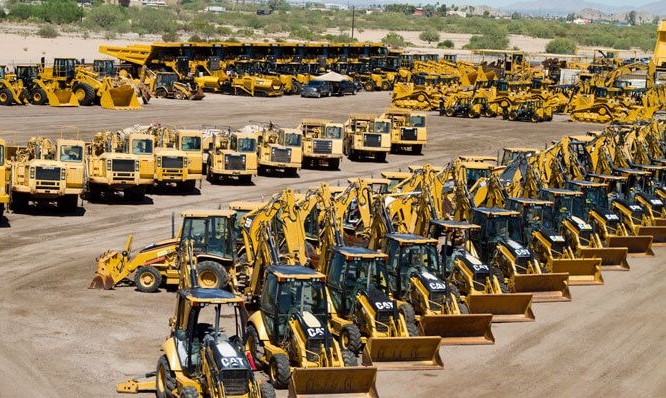What are the classification of construction equipment? Construction equipment can be broadly classified into several categories based on their function and purpose. Here’s a breakdown of the main types:

1. Earthmoving Equipment
These machines are primarily used for the excavation, lifting, and transporting of earth or material.
- Excavators: Used for digging, trenching, and lifting heavy materials.
- Bulldozers: Heavy equipment for pushing large quantities of soil, rubble, or other material.
- Backhoe Loaders: A versatile machine with a loader on the front and a backhoe at the rear for digging.
- Skid-Steer Loaders: Compact machines with a small footprint, useful for a variety of tasks including digging and lifting.
- Graders: Used for leveling and smoothing soil or gravel to create a flat surface.
- Trenchers: For digging trenches, especially for utilities like pipes or cables.
2. Material Handling Equipment
These machines are used for transporting, moving, or lifting materials on construction sites.
- Cranes: For lifting heavy loads vertically and moving them horizontally.
- Forklifts: For lifting and moving materials over short distances, typically on construction sites or warehouses.
- Conveyor Belts: Used for continuous movement of materials across short distances.
3. Compaction Equipment
These are used to compact soil, gravel, or asphalt in road construction or foundation preparation.
- Rollers: Typically used in road construction, they compact the surface by rolling over it.
- Plate Compactors: Small equipment used for compacting soil or asphalt in tight spaces.
- Rammers: Smaller tools that compact soil by repeated hammering action.
4. Paving Equipment
Used for constructing or maintaining roads and pavements.
- Asphalt Pavers: Used to lay asphalt on roads, driveways, and parking lots.
- Concrete Pavers: For placing concrete in road construction.
- Road Reclaimers: Machines that break up old pavement for recycling and reuse.
5. Concrete Equipment
These are used for mixing, transporting, and placing concrete.
- Concrete Mixers: Used for mixing concrete.
- Concrete Pumps: For pumping mixed concrete to specific locations on the construction site.
- Concrete Vibrators: Used to remove air bubbles and ensure proper settling of concrete.
- Concrete Batching Plants: For the large-scale production of concrete.
6. Road Construction Equipment
These are specialized machines for building and maintaining roads and highways.
- Bitumen Sprayers: Apply a layer of bitumen (asphalt) on the road.
- Cold Planers: For milling and removing damaged sections of a road.
- Road Rollers: Used for compressing or flattening the road surface.
7. Lifting and Material Transport Equipment
This equipment is used to move people or materials vertically or across large distances.
- Lifts: Including aerial lifts, boom lifts, and scissor lifts, these are used to elevate workers to higher levels.
- Hoists: Used for lifting heavy items or loads vertically.
8. Drilling and Boring Equipment
These are used for drilling, boring, and tunneling in construction projects.
- Pile Drivers: For driving piles into the ground to form the foundation of a building.
- Augers: Used to bore holes into the ground, often for fence posts or signposts.
- Tunnel Boring Machines (TBMs): Used for digging tunnels, often in large infrastructure projects like subways.
9. Demolition Equipment
These machines are specifically designed for demolishing structures.
- Hydraulic Breakers: Heavy-duty tools for breaking up concrete or rock.
- Wrecking Balls: A large, heavy ball used to knock down buildings.
- Explosives: Used in controlled demolitions to bring down large structures.
10. Utility Equipment
These are used for managing utilities and services on construction sites.
- Ditch Witch: Used for trenching and laying utilities like water and gas lines.
- Generators: Provide power to construction sites, especially in remote areas.
11. Surveying Equipment
Used to measure and map out the construction site.
- Total Stations: Used for precise measuring and positioning.
- Levels: For determining elevations or creating a level surface.
- GPS Systems: For mapping and locating specific coordinates.
Each of these categories can have a wide range of equipment depending on the scale and type of construction project.




